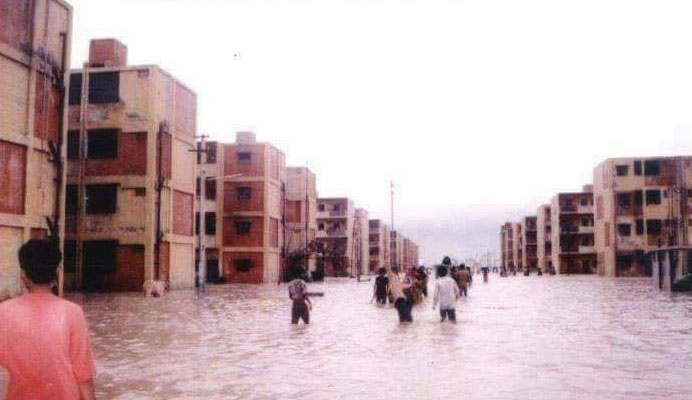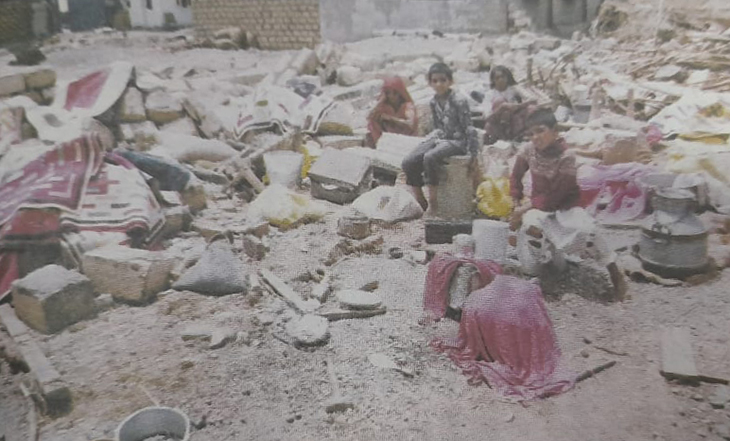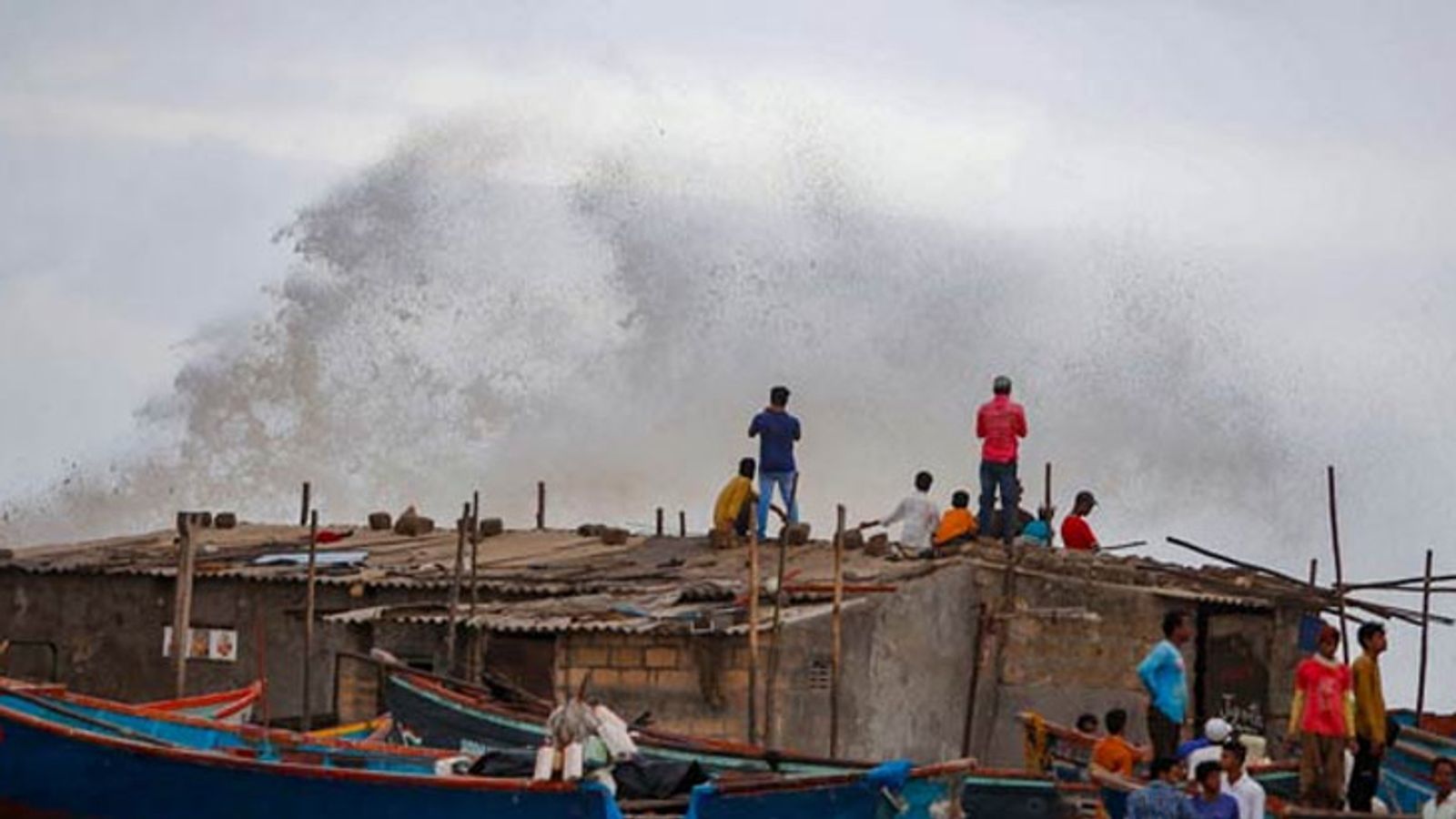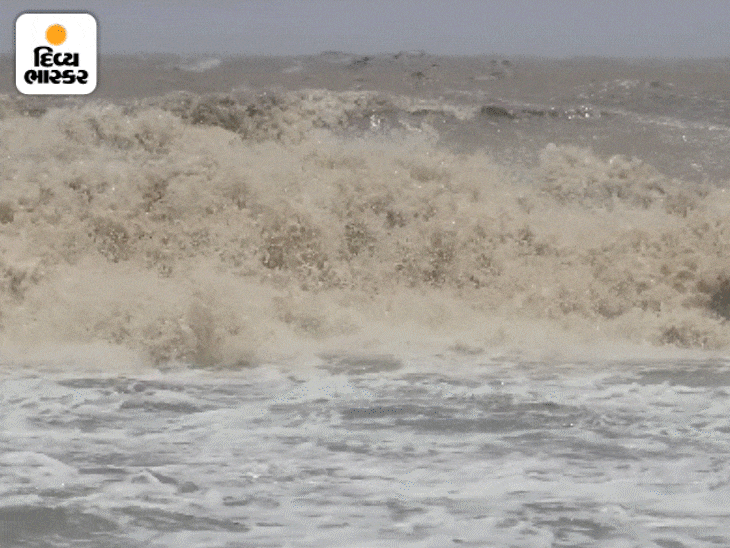Ahmedabad14 minutes ago
- Copy link
The sequence of occurrence of cyclonic storms in the Indian subcontinent in the month of May-June every year is thus normal. This time the storm Biparjoy is wreaking havoc. However the earlier introduction of ‘vayu’ and ‘tau-te’ is memorable. According to the available weather history of the last 120 years, most of the cyclones originate from the Bay of Bengal, while the Arabian Sea cyclones are fewer and milder, but this time Biparjoy flipped the coin. Of course, Bearjoy is the slowest cyclone in the last 25 years.
Cam Beerjoy has the lowest speed
Cyclone ‘Biparjoy’ formed in the Arabian Sea has finally hit the coast of Gujarat. At present the speed of the storm is 130 kmph. According to the Meteorological Department, the landphone procedure has already started in the coastal districts of Saurashtra and Kutch, which will continue till midnight. On one side, a stormy wind is blowing, on the other, it is raining heavily. Meanwhile, the sea of Kutch has become stormy. Thus the people of Kutch are facing three calamities at once. On the other hand, the system is also showing alert. More than 49 thousand people of Katha area of Kutch district have been relocated and all windmills in Kutch district have been instructed to be closed permanently. An instruction has been given by the system to keep all wind mills closed till 17th.

The devastating hurricane of 1998
Coincidentally, even in 1998, when the storm called ‘Biparjoy’ is hitting Gujarat, the month of June and Jeth was going on and even now it is only June and Jeth. Thus Jeth and June are proving fatal. Also, it has been 25 years since Kandla Cyclone on June 9, 1998. On the morning of June 9, 1998, Poonam was recruited. The wind started blowing at a speed of one and a half hundred kilometers per hour and this speed reached 160 to 180 kilometers per hour in sight. Initially a low pressure in the Arabian Sea was forecast to hit Porbandar and Dwarka, the cyclone made landfall there but crossed the Gulf of Kutch and hit the major port of Kandla.

9th June 1998 marked the 25th anniversary of the Kandla Cyclone.
11 thousand animals also died
Kandla has around five thousand workers working at the port per shift. Apart from this, the laborers and Agarias living in Bhachau, Anjar, Pune, Banna slums in Delhi’s Agaria Kandla port bay were victims. The official death toll was 1485. 1700 people were reported missing (still missing today) while 11 thousand animals were also killed. However, the unofficial death toll was overestimated and the true death toll was never revealed. The government was interested in suppressing the statistics. 1200 crore rupees was damaged in the port area. While GEB, agriculture, other government departments suffered a loss of 300 crores.

Laborers and farmers living in Banna slums in the bay were victims
The ‘wind’ storm came and went
Date: 10th June 2019 – 18th June 2019 The wind storms left the Gujarat government breathless. An NDRF team from as far as Delhi had arrived for relief work. It was being discussed that this storm will rival the storm of 1998. And its speed will be 185 km/hr. Which was moving first towards Gujarat and then towards Saurashtra. Cyclone ‘Vayu’ blew at a speed of 15 km/h over Kutch-Saurashtra and South Gujarat coast from midnight on 12th June and killed 9 civilians. Of course, there was a tense atmosphere in Somnath-Veraval. But on June 13, 2019, after miraculously reaching the shores of Veraval, Cyclone Vayu was thrown back into the Arabian Sea and Gujarat was spared the devastation of the cyclone.

:Vayu’ storm blew at a speed of 15 kmph
How much devastation was caused by the Tau-te storm
Cyclone Tau-Te which occurred between 14 May 2021 – 19 May 2021 devastated Gujarat. Devastating Cyclone ‘Tau-te’ with a speed of 220 km/hr hit the coast of Saurashtra, leaving many places devastated. An official death toll from the storm was 17. So blackout has occurred in 3850 villages of the state. More than 2 lakh trees were uprooted while 112 roads were closed for vehicular traffic. More than 20 thousand raw houses were affected.

10 km Asphalt washed away from the road up to
As a result of the storm, 96 talukas of the state received significant rainfall. More than 4,200 power company employees were busy erecting 69,429 downed electricity poles to restore power supply. As a result of the storm, all the crops in Gir-Somnath, Amreli, Bhavnagar and Junagadh suffered 100 percent damage, while the mango crop suffered 75 percent damage, according to the Agriculture Department. This storm was so severe that 10 km in Una. 174 people died during the storm when the asphalt was washed away from the road.

How do storms intensify?
Any tropical cyclone needs energy to stay alive. This energy is usually generated by hot water and steam at the surface of the ocean. Currently, the ocean water is warm up to 50 meters depth, which is able to provide energy to these cyclones. It is this type of atmosphere that gives momentum to Tau-Te cyclones. More heat is released by the condensation of water vapor, due to which the atmospheric pressure also decreases. A cyclone is formed after a low pressure system passes through several stages of intensification. Generally, tropical cyclones in the North Indian Ocean region (Bay of Bengal and Arabian Sea) blow during pre-monsoon and post-monsoon periods. Which mainly occurs during the months of October and December. Cyclones affecting Indian coasts mainly blow during the period between May-June and October-November.

Is the Arabian Sea becoming a hurricane hub?
Considering the annual study, Bay of Bengal and Arabian Sea have an average of 5 cyclones. Which generates 4 cyclones in the Bay of Bengal and is more intense and warmer than the Arabian Sea. The cyclones that form in the Arabian Sea usually pass over the Lakshadweep region and mostly in a westerly direction or the west coast of India. However, in recent years meteorologist studies have found that the Arabian Sea is also warming now due to global warming.
.